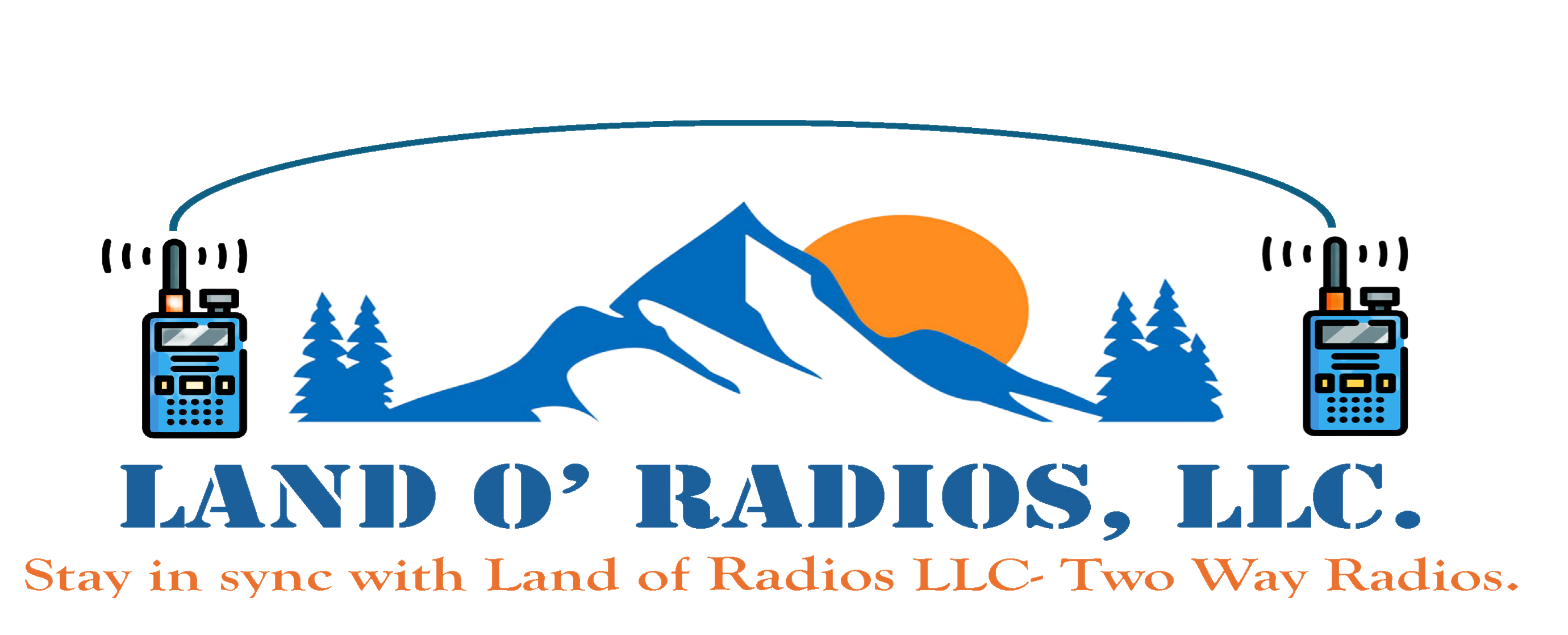Why Farm Radios Are Essential for Modern Agriculture
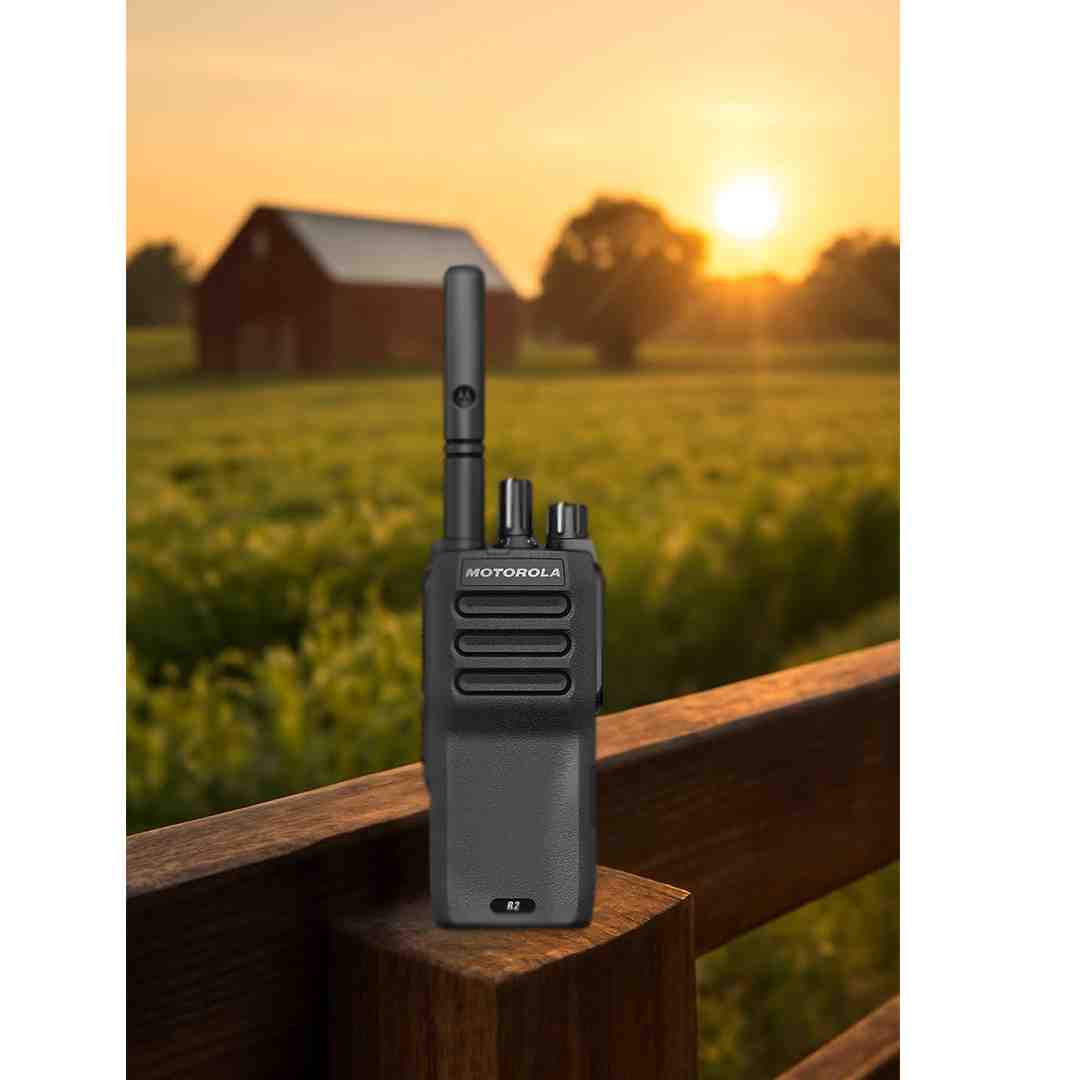
Farm radios are two-way communication devices designed to keep agricultural workers connected across vast fields, remote locations, and challenging environments where cell service is unreliable or non-existent.
Quick Answer - Top Farm Radio Options:
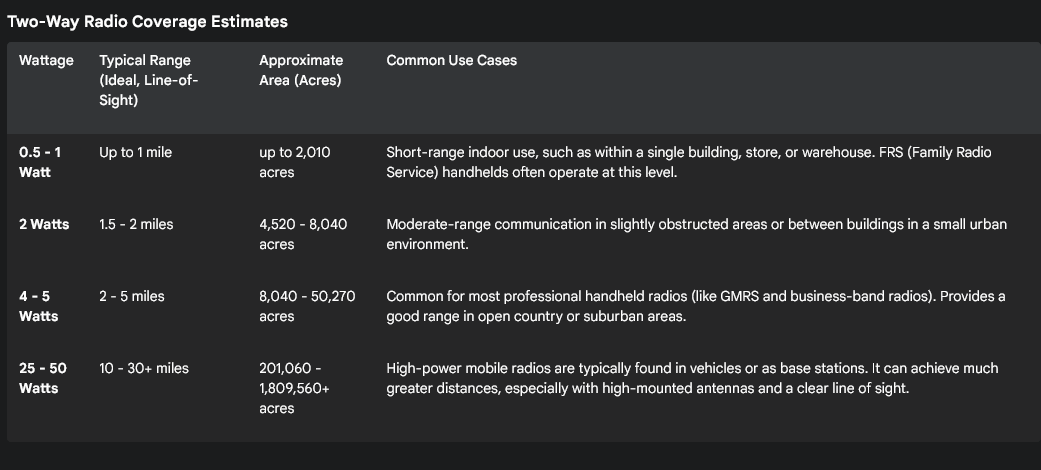
From the Central Valley of California to the Midland Farm Belt, reliable communication can mean the difference between a successful harvest and costly delays. While cell phones drop calls and lose signal in remote areas, farm radios provide instant, dependable contact between tractors, combines, grain elevators, and farm shops.
The numbers tell the story: Studies show that up to 40% of farmers who use radio-supported programs make operational changes that improve their results. Whether you're coordinating planting schedules, responding to equipment breakdowns, or alerting crews to weather changes, clear communication boosts both safety and efficiency.
Modern farm radios have evolved far beyond the AM radio stations that once served rural communities. Today's digital handhelds and mobile units offer crystal-clear audio, extended battery life, and rugged construction that withstands dust, moisture, and the vibrations of heavy machinery.
I'm Rene Fornaris, Vice President of Land O' Radios, with over ten years of experience in two-way radio communications helping agricultural operations choose the right farm radios for their unique needs. My goal is ensuring farmers get reliable, long-range communication tools that keep their teams connected and productive in any conditions.
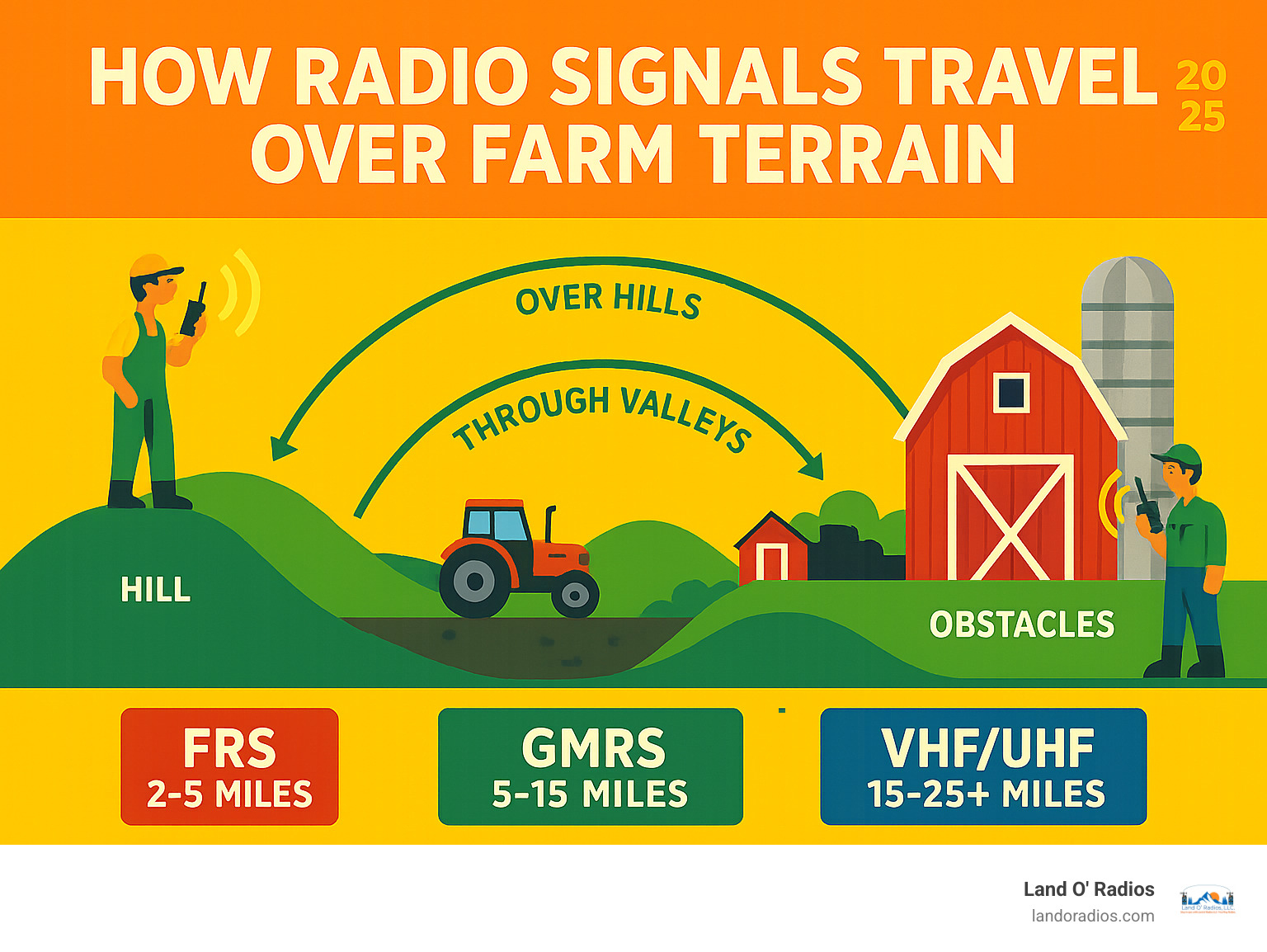
Farm Radio Communication Essentials
Understanding the technical foundations of farm radios helps you make informed decisions about equipment that will serve your operation for years to come. Agricultural communication systems face unique challenges: vast distances, challenging terrain, noisy equipment, and harsh weather conditions that would disable consumer electronics.
Radio frequency selection depends heavily on your terrain and coverage needs. VHF (Very High Frequency) signals travel farther in open spaces and work exceptionally well across flat farmland and pastures. UHF (Ultra High Frequency) signals penetrate foliage better, making them ideal for orchards, vineyards, and heavily wooded areas. GMRS (General Mobile Radio Service) radios offer excellent performance for family farm operations, providing up to 50 watts of transmit power with relatively simple licensing requirements.
MURS (Multi-Use Radio Service) radios operate license-free but are limited to 2 watts of power, making them suitable for smaller operations or as backup communication devices. Digital radios provide superior audio quality and advanced features like text messaging and GPS tracking, while analog radios offer simplicity and compatibility with existing equipment.
Waterproofing becomes critical when your radios face rain, irrigation spray, and dusty conditions. Look for IP67-rated devices that can withstand complete submersion and continue operating. Battery life expectations should align with your longest work days - premium farm radios offer 12-16 hours of continuous use on a single charge.
Noise-cancelling microphones and hands-free headsets transform radio usability in noisy tractor cabs and around heavy machinery. VOX (Voice Operated Exchange) technology allows completely hands-free operation, while Bluetooth connectivity enables wireless headset use.
Repeaters extend your communication range dramatically by receiving weak signals and retransmitting them at full power. A properly positioned repeater can provide 20+ mile coverage across challenging terrain that would otherwise limit radio range to just a few miles.
More info about Two-Way Radio Training
Why Effective Communication Matters
Worker safety stands as the primary reason agricultural operations invest in reliable farm radios. When equipment breaks down in remote fields, radios provide instant access to help. During medical emergencies, every second counts - cellular service delays can become life-threatening situations.
Real-time coordination transforms farm efficiency. Instead of driving across hundreds of acres to relay messages, supervisors can instantly direct equipment operators, coordinate supply deliveries, and adjust work schedules based on changing conditions. This immediate communication prevents costly delays and reduces fuel consumption from unnecessary trips.
Weather alerts become crucial during planting and harvest seasons. NOAA weather radio integration provides automatic severe weather warnings, allowing crews to seek shelter or protect equipment before dangerous conditions arrive. Lightning, hail, and sudden storms pose serious risks to both personnel and expensive machinery.
Equipment logistics benefit enormously from instant communication. When combines need fuel, grain trucks require routing, or maintenance issues arise, radios eliminate the guesswork and delays that plague operations relying solely on cell phones or physical message delivery.
The behavioral change statistics are compelling: research shows that 40% of farmers who access radio-supported information make operational improvements as a direct result. This isn't just about convenience - it's about measurable productivity gains that directly impact profitability.
Key Features Checklist
Long-range capability should match your operational needs. Small family farms may find 5-mile range sufficient, while large commercial operations require 15-25 mile coverage. Consider your furthest fields, equipment storage areas, and grain handling facilities when determining range requirements.
Wattage selection directly impacts both range and battery life. Higher wattage (25-50 watts) provides extended range but consumes more power. Lower wattage (5-15 watts) offers longer battery life but reduced coverage. Match wattage to your specific needs rather than automatically choosing maximum power.
Channel capacity determines how many different groups can communicate simultaneously without interference. Large operations benefit from 16+ channels, allowing separate channels for different crews, equipment types, and management levels.
Rugged construction specifications should include IP67 waterproofing, shock resistance, and temperature tolerance from -20°F to 140°F. Agricultural equipment generates significant vibration, and radios must withstand constant movement and occasional drops.
NOAA weather integration provides automatic severe weather alerts and continuous weather monitoring. This feature can prevent equipment damage and ensure worker safety during rapidly changing conditions.
Bluetooth connectivity and VOX capability enable hands-free operation essential for equipment operators who need both hands for machinery control. External speaker compatibility helps overcome engine noise in tractor cabs.
Scalable network architecture allows easy expansion as your operation grows. Choose radio systems that support additional handhelds, mobile units, and repeaters without requiring complete replacement of existing equipment.
Best Farm Radios for Every Operation
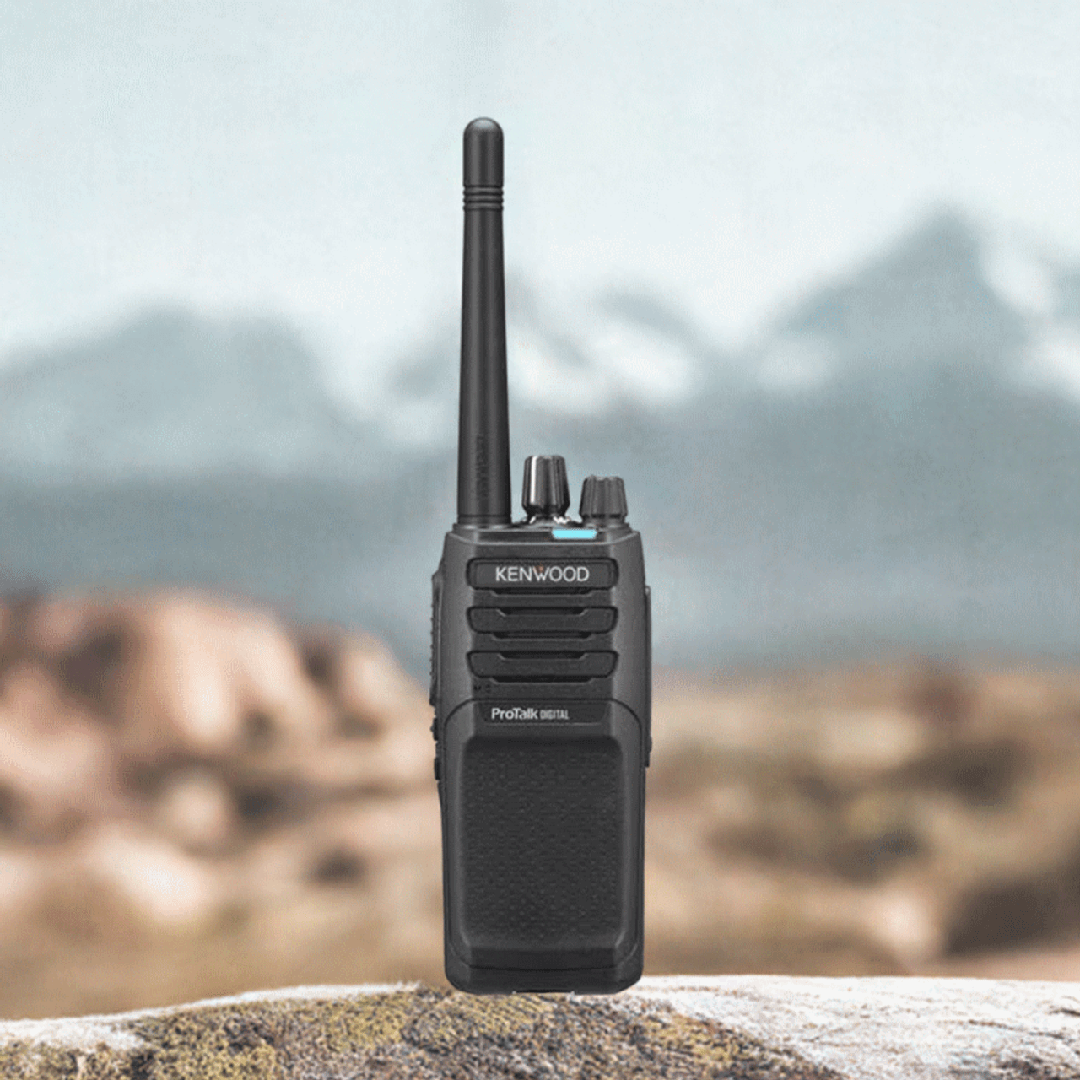
We've curated our farm radio selections based on real-world agricultural needs, customer feedback, and performance testing in challenging farm environments. Our recommendations span from small family operations to large commercial enterprises, including specialized equipment for forestry, ranching, and in-cab entertainment systems.
Small family farms require different communication solutions than thousand-acre commercial operations. Budget constraints, licensing preferences, and technical complexity all influence the best radio choice for each situation. We've organized our recommendations by operation size and specific use cases to help you find the perfect match.
Large operations demand professional-grade equipment with advanced features like digital encryption, fleet management software integration, and extended warranty coverage. These systems represent significant investments but provide the reliability and capabilities that justify their cost through improved efficiency and safety.
Forestry and ranching operations face unique challenges including dense foliage, extreme weather exposure, and extended periods away from base facilities. Our specialized recommendations address these specific environmental demands.
Tractor cab entertainment and information systems combine communication capability with music, weather, and news reception. These integrated solutions reduce equipment complexity while providing comprehensive functionality for long days in the field.
Small Farm Radios Buying Guide
FRS (Family Radio Service) and MURS radios provide excellent entry-level communication for farms under 500 acres. These license-free options eliminate regulatory complexity while delivering reliable 2-5 mile range coverage. FRS radios operate on 14 channels with 2-watt maximum power, while MURS offers 5 channels with similar power limitations.
License-free operation means immediate deployment without FCC paperwork or fees. Simply charge the batteries, select matching channels, and begin communicating. This simplicity appeals to smaller operations that want reliable communication without regulatory overhead.
Power limitations (up to 2 watts) provide adequate range for most small farm applications while maximizing battery life. Expect 8-12 hours of continuous use from quality handheld units, with standby time extending to several days.
Range expectations of 2-5 miles work well for most family farm operations. Flat terrain and liftd positions extend range, while hills, buildings, and dense vegetation reduce coverage. Consider your specific geography when evaluating range requirements.
IP67 waterproof handheld units withstand agricultural environments including rain, irrigation spray, and dusty conditions. Look for rubberized grips and reinforced antenna connections that survive daily use and occasional drops.
Affordable radio bundles typically include multiple handhelds, desktop chargers, belt clips, and basic accessories. Bundle pricing often provides significant savings compared to individual component purchases.
Ease of use features like large buttons, clear displays, and intuitive controls reduce training time and operational errors. Emergency features such as one-button distress calls and automatic location transmission improve safety for solo workers.
Top Five Differences Between Two-Way Radios and Walkie Talkies
Mid-Size Farm GMRS Solutions
GMRS radios bridge the gap between license-free FRS units and professional business radios. With 15-25 watt mobile units and handheld cross-compatibility, GMRS provides excellent performance for medium-sized operations while maintaining relatively simple licensing requirements.
Mobile radio installations in tractors, combines, and farm trucks provide the power and antenna height needed for extended range communication. Magnetic roof antennas offer easy installation and removal, while permanent installations provide maximum performance and security.
Handheld cross-compatibility ensures seamless communication between mobile and portable units. Workers can move between vehicles and field positions while maintaining constant contact with supervisors and other crew members.
NOAA weather alerts integrate severe weather warnings directly into your communication system. Automatic activation during weather emergencies ensures crews receive critical safety information even when focused on other tasks.
Family licensing covers all immediate family members under a single FCC license, making GMRS ideal for family farm operations. The licensing process is straightforward and doesn't require technical testing.
External speakers overcome engine noise in tractor cabs and other noisy environments. Amplified speakers with noise cancellation technology ensure clear communication even during demanding field operations.
Large-Scale Farm Radios & Repeaters
Farm radios for large-scale operations require professional-grade equipment capable of covering thousands of acres with crystal-clear communication. These systems typically feature 40-50 watt base stations and mobile units, tower-mounted repeaters, and advanced digital features.
High-power base and mobile radios provide the transmission strength needed for extended range communication. Professional installations include proper grounding, surge protection, and backup power systems to ensure reliable operation during emergencies.
Tower-mounted repeaters extend coverage to 20+ miles across challenging terrain. Strategic repeater placement can provide complete coverage across large operations, eliminating dead zones and communication gaps.
Digital encryption protects sensitive business communications from eavesdropping. Advanced digital systems also provide clearer audio quality and additional features like text messaging and GPS tracking.
Fleet management software integration allows centralized monitoring and control of radio networks. These systems can track equipment locations, monitor radio usage, and provide detailed reporting for operational analysis.
Hands-free headsets become essential for equipment operators who need both hands for machinery control. Wireless Bluetooth headsets provide maximum freedom of movement while maintaining clear communication.
Scientific research on rural radio impact
Licensing, Installation & Maintenance Made Simple

FCC licensing requirements vary by radio type and intended use. Understanding these requirements before purchasing equipment prevents compliance issues and ensures legal operation of your communication system.
GMRS family licenses cover all immediate family members under a single application and fee. The process involves completing FCC Form 605 online, paying the required fee, and receiving your call sign within days. No technical testing is required, making GMRS accessible to most farm operations.
Business VHF/UHF licenses require more detailed applications including frequency coordination, technical specifications, and operational requirements. These licenses typically take 30-60 days to process and may require professional assistance to ensure proper completion.
Antenna placement dramatically affects radio performance and range. Higher antenna positions provide better coverage, while proper grounding protects equipment from lightning damage. Professional installation ensures optimal performance and safety compliance.
Grounding systems protect expensive radio equipment from lightning strikes and electrical surges. Proper grounding also reduces radio frequency interference and improves overall system performance.
Annual inspections help identify potential problems before they cause equipment failure. Battery condition, antenna connections, and programming accuracy should be checked regularly to maintain optimal performance.
Battery rotation extends equipment life and ensures reliable operation. Rechargeable batteries should be cycled regularly and replaced when capacity drops below acceptable levels.
Firmware updates provide new features and bug fixes for digital radio systems. Regular updates ensure compatibility with evolving communication standards and maintain optimal performance.
More info about Commercial Radios 2025 roundup
Frequently Asked Questions about Farm Radios
Do I need a license for farm radios?
License requirements depend on the type of radio you choose. FRS and MURS radios operate license-free, making them ideal for small operations that want immediate deployment without regulatory complexity. GMRS radios require a simple family license that covers all immediate family members - no testing required, just complete the online application and pay the fee.
Business VHF/UHF radios require more comprehensive licensing including frequency coordination and technical specifications. These licenses typically take 30-60 days to process but provide access to professional-grade frequencies and higher power limits.
How far will my radios talk across hilly fields?
Radio range depends on several factors including power output, antenna height, terrain, and atmospheric conditions. In flat, open terrain, handheld radios typically provide 2-5 mile range, while mobile units with liftd antennas can reach 10-15 miles or more.
Hilly terrain reduces range by blocking radio signals. VHF frequencies generally perform better over hills and open areas, while UHF frequencies penetrate foliage more effectively. Repeaters can overcome terrain limitations by retransmitting signals from liftd positions.
Are radios better than cell phones in remote areas?
Farm radios excel in remote areas where cellular coverage is unreliable or non-existent. Unlike cell phones, radios don't depend on tower infrastructure that may be miles away. They provide instant communication without monthly service charges and work reliably in harsh weather conditions that often disrupt cellular service.
Radios also offer group communication capabilities that cell phones can't match. One transmission reaches all team members simultaneously, eliminating the need for multiple phone calls to coordinate activities.
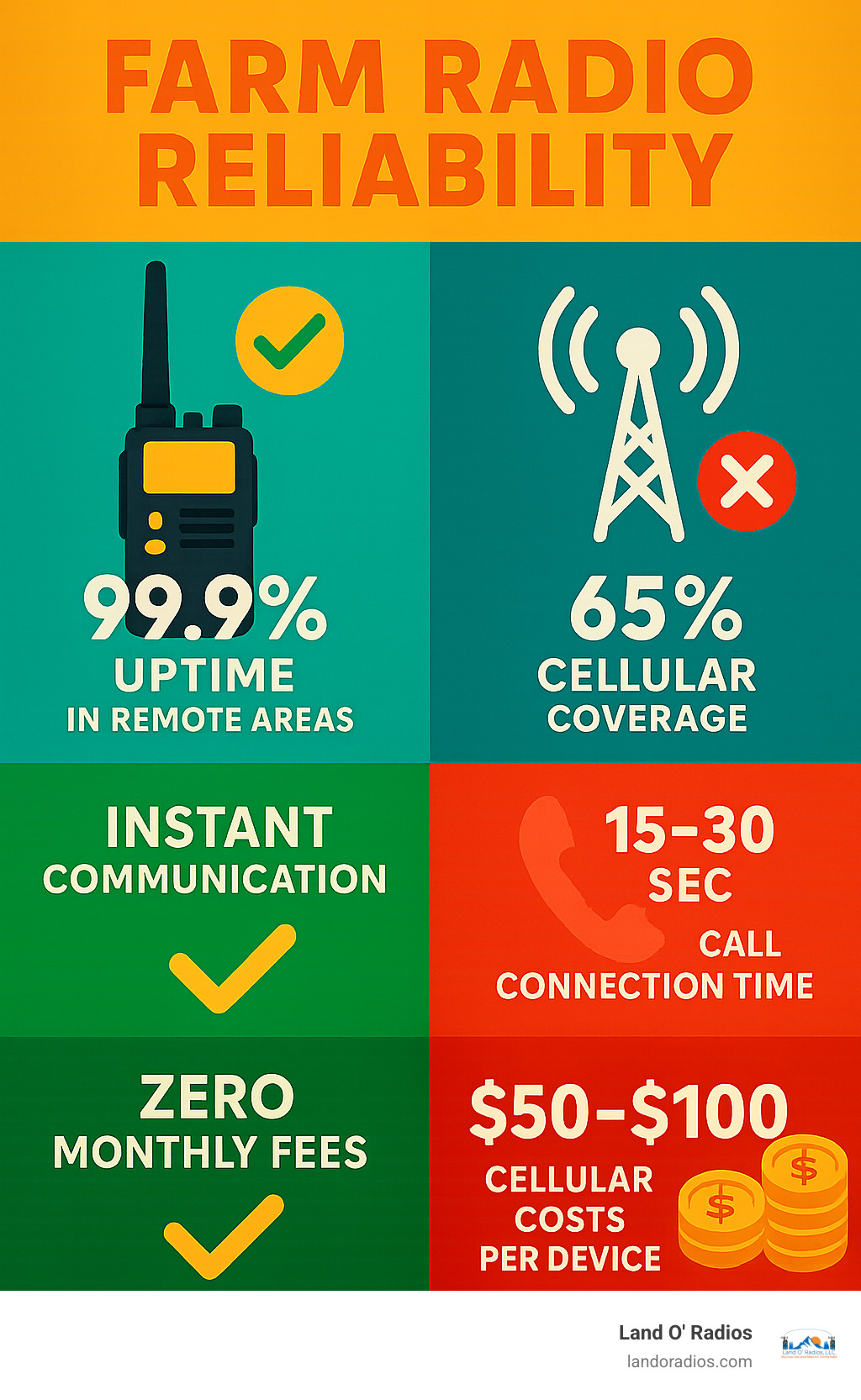
Conclusion
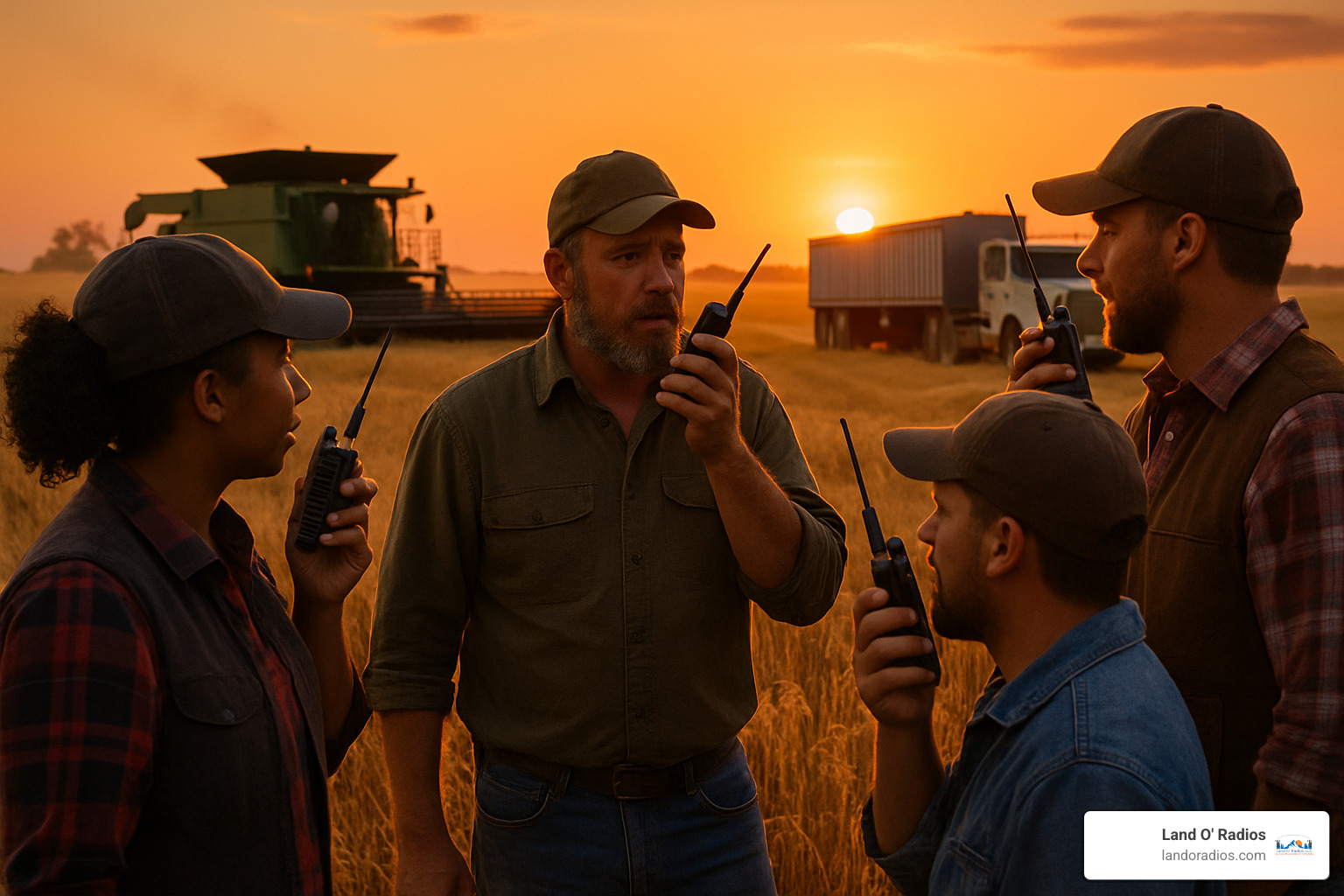
Farm radios represent one of the most cost-effective investments you can make in agricultural communication and safety. From license-free FRS units for small family operations to professional VHF/UHF systems with repeaters for large commercial enterprises, the right radio system transforms how your operation communicates and coordinates daily activities.
The key to success lies in matching radio class and power output to your specific needs. Small farms benefit from simple, affordable solutions that provide reliable local communication. Medium-sized operations find GMRS systems offer the perfect balance of performance and simplicity. Large commercial farms require professional-grade equipment with advanced features and extended range capabilities.
Effective communication isn't just about the radios themselves - proper installation, regular maintenance, and user training ensure you get maximum value from your investment. Whether you're coordinating harvest activities, responding to equipment breakdowns, or ensuring worker safety in remote locations, reliable communication keeps your operation running smoothly.
At Land O' Radios, we've spent years helping agricultural operations choose the right communication solutions. Our curated selection focuses on proven performers that deliver reliable service in challenging farm environments. We understand that every operation is unique, and we're here to help you find the perfect farm radio solution for your specific needs.
Ready to upgrade your farm communication? Browse our complete selection of agricultural radios, accessories, and installation services. Our team of experts is standing by to help you choose the right equipment and ensure proper setup for years of reliable service.
